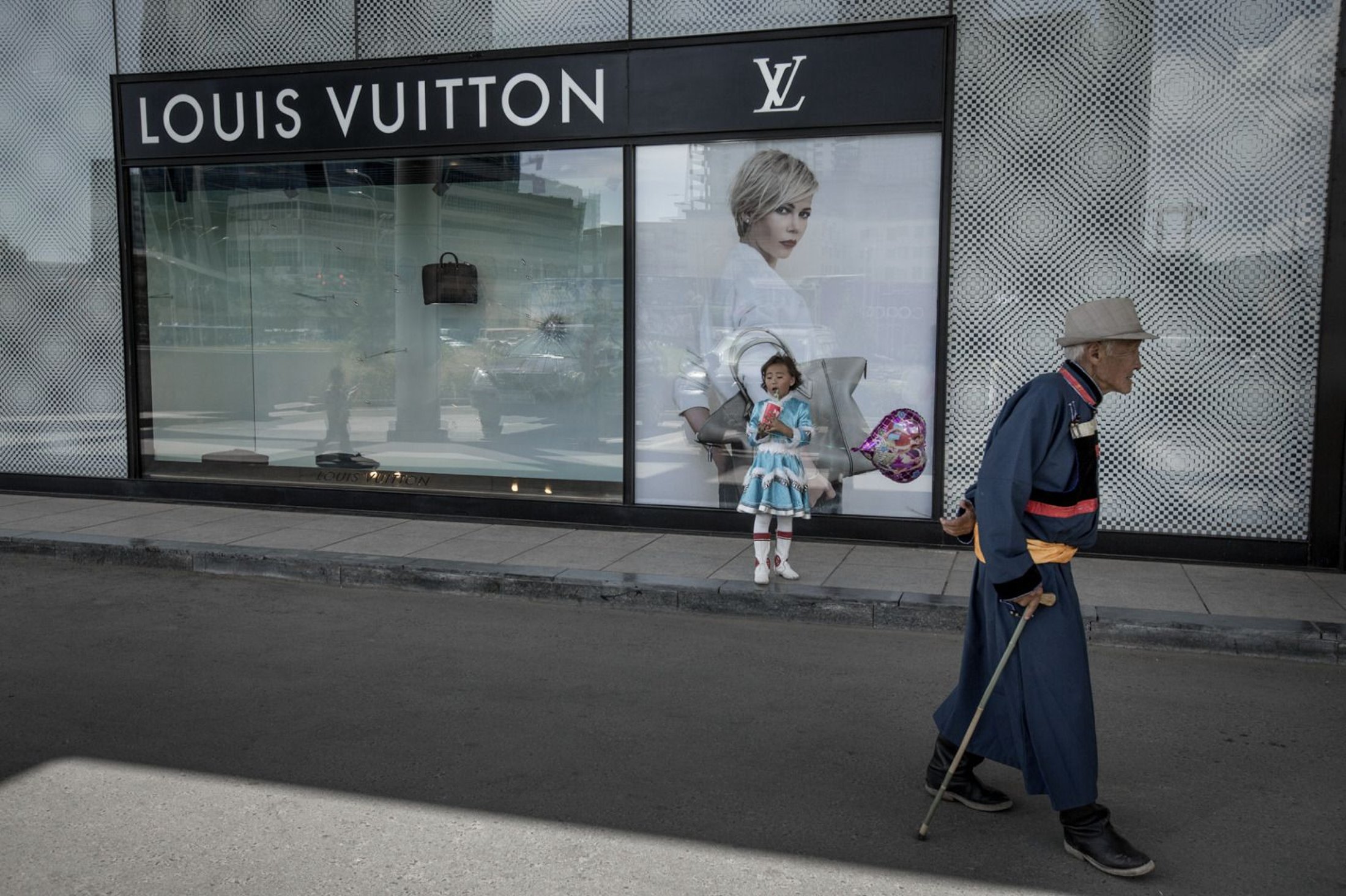At the city’s central Genghis Khan Square Mongolia’s first Louis Vuitton boutique. Ulaanbaatar. © Jan Locus
New hotels and office towers rise in Ulaanbaatar, the capital of Mongolia, as a mining boom boosts the economy. © Jan Locus
Mining money has spawned gleaming office towers, pricey gated communities and luxury-car dealerships in the capital. © Jan Locus
A crumbling façade is all that's left of the former state-owned mine at Nalaikh. What is left of the old office building of Nailakh's state mine. Visitors can still read "Nalaikh Great Mine" in faded Cyrillic letters. Nalaikh. © Jan Locus
10-year-old Khulan playing in the polluted Tuul river. The Tuul river is suffering from pollution, some caused by Ulaanbaatar's central sewage treatment facility, as well as heavy mineral and sedimentation pollution caused by gold mining in the Zaamar area. © Jan Locus
Architecture in the capital is a mixture of grey Soviet bloc apartments and new office buildings and towers. Ulaanbaatar. © Jan Locus
Ariunbold Altankhuum, founder of the Mongolian neo-Nazi group Tsagaan Khass ('White Swastika'). Ulaanbaatar. © Jan Locus
Mongolian Messi playing in the suburbs of Ulaanbaatar. © Jan Locus
Naadam is a traditional festival in Mongolia. Naadam or more fully Eriin Gurvan Naadam, the ‘Three Games of Men’. The games are Mongolian wrestling, horse racing and archery and are held throughout the country during midsummer. Ulaanbaatar. © Jan Locus
Naadam is a traditional festival in Mongolia. Naadam or more fully Eriin Gurvan Naadam, the ‘Three Games of Men’. The games are Mongolian wrestling, horse racing and archery and are held throughout the country during midsummer. Ulaanbaatar. © Jan Locus
A new statue of Genghis Khan at the city’s central Genghis Khan Square. Ulaanbaatar. © Jan Locus
Nalaikh was the first mining town in Mongolia, set up in the 1920s to supply coal to the growing capital, Ulan Bator, just 40 kilometres away. It remained important until 1992, when the communist-era state-owned firm that ran the mine shut it. Today, the landscape is devastated. The few large mining buildings that remain are abandoned shells, supplanted by clusters of grey tents. Nalaikh. © Jan Locus
A boy with the National flag painted on his face. Ulaanbaatar. © Jan Locus
A 40 metre tall statue of Genghis Khan on horseback, on the bank of the Tuul River at Tsonjin Boldog, where according to legend, he found a golden whip. The statue is symbolically pointed east towards his birthplace. Tsonjin Boldog. © Jan Locus



